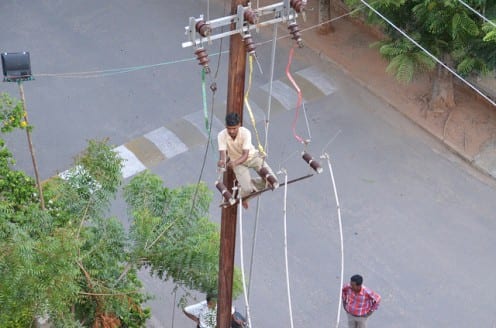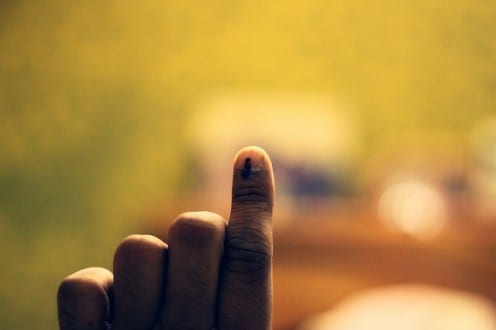“Free Basics” – does it really matter to the poor in Panchagrami?
By Shriram Venkatraman, on 27 December 2015
The launch of Facebook’s ‘Free Basics’, a rebranding of internet.org, has been a hot topic in India for the past few months as Facebook tries to grow its second largest user base (over 130 million), slightly more than a quarter of all the people who are online in India. By providing free internet through the Free Basics package, Facebook are aiming to get around 1 billion people online in a march towards digital equality. However, the service has been criticised as it will only promote select sites, thus compromising net neutrality.
This past week, Free Basics has been in the news again since the TRAI (Telecom Regulatory Authority of India), has asked Facebook’s Indian partner, Reliance Communications, to put the roll-out of Free Basics on hold until it reviews the service.
While Free Basics is designed for people who can’t afford an internet connection, does the delay actually matter to the poor in our Indian fieldsite, Panchagrami*? The issues surrounding Free Basics have made the news in India, however this post explores the topic from the perspective of the poor in Panchagrami and is not an argument either for Free Basics or for net neutrality.
A significant discovery to arise from our fieldwork across nine different fieldsites in eight countries was that digital equality does not necessarily mean offline social equality. Instead, we found that both influence each other and are complexly interwoven. So, while web companies may see technology or access to the internet as a panacea for all social evils, they unfortunately often don’t consider wider complexities or see how social issues like gender equality and illiteracy are actually integral to digital equality.
Taking into consideration discoveries from our fieldwork, here are five reasons why the launch of Free Basics might not matter to the poor in Panchagrami:
Illiteracy: On average, a poor household in Panchagrami might possess one, or a maximum of two, used non-smart (feature) phones, whose primary purpose is voice communication. This limited use of mobile technology is not only down to more advanced communication tools being inaccessible, but also due to the illiteracy of users. In our fieldwork we came across many cases where a text message had to be read by someone other than the phone’s owner (especially when the owner was a woman). Although literacy among younger generations seems to be on the rise (with people often staying in education until the 5th grade), literacy still needs to improve for people to be able to send text messages, let alone use the internet.
Women and Phones: Caste issues and strict social surveillance of young unmarried women often makes it difficult for them to access phones, let alone use the internet. There is a prevalent social notion that access to phones might endanger a woman’s chastity. Unmarried young women with school education have the highest potential to access the internet of all the people in our fieldsite, but are cut off from tools to gain such access. Once married they may gain the right to own a phone, yet access to the internet might still be guarded by their in-laws.
News and Sociality: Access to news/information is quoted as an important features of the Free Basics scheme. However, for the poor in Panchagrami access to information and news are generally through a set of entirely different channels. While news pertaining to people’s everyday needs is often passed through word of mouth, access to news for men is often through the “corner tea shop culture” that has long existed in Tamil Nadu, where people meet to drink tea, read newspapers, and partake in informal debates about daily news. Listening to such debates forms an important learning culture for the illiterate poor men in Panchagrami. Further, people still do rely on Panchayat offices (local village council offices) to pass on policy news that affects them. Aural learning assumes more importance than textual learning for this group.
Entertainment: People in Panchagrami normally combat boredom by listening to songs from films and watching television (freely provided by the government). Film songs are typically bought cheaply from phone recharge booths by an individual and then shared with others. Since the latest and the best songs are bought and shared this way, people do not need to access the internet to enjoy their favoured forms of entertainment. Even if they did, the Free Basics package does not provide them with a site to download such songs.
Infrastructure: Reliance Communications is not a popular telecom provider in Panchagrami. Competitors such as Airtel, Aircel, and Vodafone occupy the biggest share of telecom services used by the poor in Panchagrami. Hence, offering the Free Basics package on Reliance won’t necessarily reach the poor, as they don’t use this provider.
In conclusion, the Free Basics scheme might have an affect on India’s telecom policies, but its intended benefits for the really poor warrant further study, since currently it does not seem to make a difference to their lives, at least for people in Panchagrami.
* Panchagrami is the pseudonym of a peri-urban site located just outside the limits of Chennai, Tamil Nadu, where the author spent fifteen months studying the impact of social media on the lives of people.
 Close
Close







